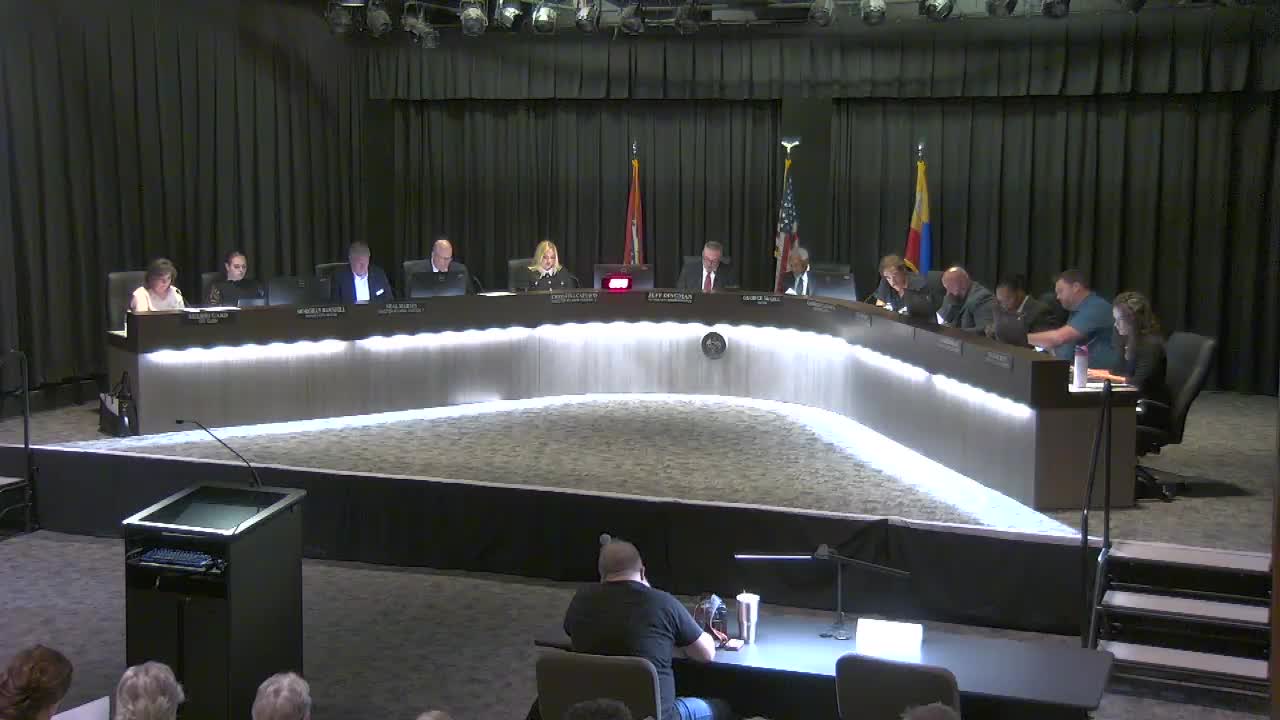Fort Smith approves emergency repairs to collapsed sewer main; two contractors paid for point repairs and main replacement
October 14, 2025 | Fort Smith, Sebastian County, Arkansas
This article was created by AI summarizing key points discussed. AI makes mistakes, so for full details and context, please refer to the video of the full meeting. Please report any errors so we can fix them. Report an error »

The Board of Directors considered and approved measures responding to a collapsed sanitary sewer segment near the intersection of Cherokee Circle and Lee Avenue.
Deputy Director of Engineering Jimmy Johnson told the Board staff found approximately 400 linear feet of an 8-inch sewer main (originally installed in 1955) had collapsed between two manholes. Because of limited access, pipe depth and nearby power poles, staff ruled out an open-cut approach and sought trenchless repair options. Vortex (Vortex Services) submitted the lowest initial proposal — about $316,510 — to rehabilitate the line by cured-in-place pipe (CIPP). Once work began, crews discovered a service line incorrectly connected to the concrete pipe and additional instability; staff concluded full CIPP rehabilitation was not feasible without further collapse risk.
Vortex completed two emergency point repairs to restore flow. The Board adopted a resolution accepting the project and authorizing payment to Vortex Services in the amount of $130,000 for the two point repairs. That ordinance/resolution passed 7–0.
Because the main-connection problem remained, engineering staff requested a proposal to correct the sewer-main connection and replace the sanitary sewer main between the two manholes. Kraft Rentals Construction Company submitted the lowest acceptable proposal and completed the work. The Board authorized final payment to Kraft Rentals Construction Company in the amount of $304,760; that action carried on a recorded vote of 6 in favor and 0 opposed (roll call showed one member absent from that vote).
Officials said the problems dated to older construction practices, and that cleaning and inspection during the initial rehabilitation attempt caused a further collapse risk. Staff said the emergency approach (two point repairs and then main replacement) restored service while limiting surface disruption.
Ending
Board documents show the City will pay Vortex for the emergency point repairs and pay Kraft Rentals for the main replacement; staff will continue to review site-specific repair methods for similar aged concrete mains elsewhere in the system.
Deputy Director of Engineering Jimmy Johnson told the Board staff found approximately 400 linear feet of an 8-inch sewer main (originally installed in 1955) had collapsed between two manholes. Because of limited access, pipe depth and nearby power poles, staff ruled out an open-cut approach and sought trenchless repair options. Vortex (Vortex Services) submitted the lowest initial proposal — about $316,510 — to rehabilitate the line by cured-in-place pipe (CIPP). Once work began, crews discovered a service line incorrectly connected to the concrete pipe and additional instability; staff concluded full CIPP rehabilitation was not feasible without further collapse risk.
Vortex completed two emergency point repairs to restore flow. The Board adopted a resolution accepting the project and authorizing payment to Vortex Services in the amount of $130,000 for the two point repairs. That ordinance/resolution passed 7–0.
Because the main-connection problem remained, engineering staff requested a proposal to correct the sewer-main connection and replace the sanitary sewer main between the two manholes. Kraft Rentals Construction Company submitted the lowest acceptable proposal and completed the work. The Board authorized final payment to Kraft Rentals Construction Company in the amount of $304,760; that action carried on a recorded vote of 6 in favor and 0 opposed (roll call showed one member absent from that vote).
Officials said the problems dated to older construction practices, and that cleaning and inspection during the initial rehabilitation attempt caused a further collapse risk. Staff said the emergency approach (two point repairs and then main replacement) restored service while limiting surface disruption.
Ending
Board documents show the City will pay Vortex for the emergency point repairs and pay Kraft Rentals for the main replacement; staff will continue to review site-specific repair methods for similar aged concrete mains elsewhere in the system.
View full meeting
This article is based on a recent meeting—watch the full video and explore the complete transcript for deeper insights into the discussion.
View full meeting
